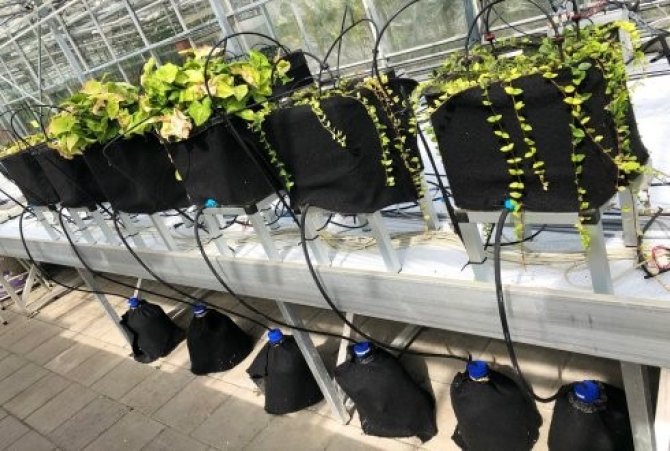Circular water systems
Water scarcity is a global challenge. A key reason for water scarcity is the poor quality of the available water: the water often contains contaminants due to human activity. This is a threat to the environment and public health, and prevents the reuse of water. Clean water cycles are therefore needed. WIMEK is helping to achieve this by modelling water quality, developing technologies to remove contaminants and developing strategies for water reuse. We use multidisciplinary methods and collaborate with stakeholders to make sure our science leads to solutions for society.

Background
Water scarcity is a global challenge. However, scarcity is often due to the poor quality of the available water rather than a lack of water. Human activity results in contamination with chemicals, plastics and so on, while climate change is exacerbating the problem, causing salt accumulation. Water contamination harms biodiversity, ecosystems and human health, and increases the economic costs of agriculture and industry. While many water treatment facilities have been implemented in recent decades, they often still release pollutants, contaminating rivers, lakes and coastal areas. Circular water systems providing clean water are therefore urgently needed. WIMEK’s research helps achieve such clean water cycles.
The Netherlands has a long history and reputation on water quantity: flooding. WIMEK’s research demonstrates our developing expertise and international position as water quality experts able to tackle water quality problems in our pursuit of clean water cycles.
Research objectives and approach
Our research spans all aspects of the clean water cycle. There are three key objectives:
- To understand water quality by modelling pollutants.
- To develop sustainable technologies for producing clean water fit for use.
- To develop strategies for wastewater reuse in agriculture.
WIMEK’s research approach is multidisciplinary, linking the fields of water management and governance, environmental technology, microbiology, and water quality and aquatic ecology. To understand water quality, we use comprehensive modelling. The models let us identify pollution sources and the impacts of poor water quality and evaluate the effectiveness of interventions. Models are particularly valuable for areas where data is scarce. We use scenario analyses to model the effect of future socio-economic developments and climate change.
We develop water technologies for treating contaminants and producing clean water for safe discharge into the environment or for reuse. We aim to develop technologies that are sustainable, economically feasible, and able to treat water of varying quality under different environmental conditions.
Our work on strategies for waste water reuse involves meeting increasing demands by water users with different water quality requirements. An example is the use of wastewater for peri-urban agriculture in urbanizing areas of Africa and Asia.
Stakeholder involvement
We work with public and private stakeholders to ensure our research has societal impact. In Uganda, we developed a comprehensive modelling tool for use by sanitation safety planners. The tool simulates the number of pathogens that reach the surface water. Our water technology research is performed in close collaboration with drinking water companies, water boards, technology companies, government regulators, industries, farmers and citizens. For our research on wastewater reuse in urbanizing regions, we team up with farmers and public authorities in Asian, African and South American countries and with international organizations such as the International Water Management Institute (IWMI) and the World Bank.
Link to education
We provide BSc and MSc courses for students studying Environmental Science, Urban Environmental Management, Earth & Environment, Climate Studies, International Land & Water Management and Biotechnology. Water quality is also a focus within the Copernicus project, in which we teach users to develop their own climate and water services.
Research highlights
Our comprehensive multi-pollutant models are an advance on the usual approach in which water quality variables such as nutrients, pathogens and plastics are studied individually. Interactions between the variables can be important and our models take account of this. For example, nutrient pollution turns lakes into toxic soups of algal blooms; our comprehensive models help develop new solutions to prevent these algal blooms.
We develop sustainable water technologies that are technically feasible and that also recover economically valuable products. A notable example is the Vital Urban Filter, where we developed a compact wetland system that treats wastewater for reuse in irrigation while producing ornamental plants. We also perform research to understand the fate and transformation of microcontaminants such as trace pharmaceuticals, and develop technologies for their removal. For example, we design innovative bioreactors and nature-based solutions in combination with advanced physical and chemical techniques.
We also explore opportunities for conjunctive use and wastewater reuse for irrigated agriculture. By studying practices along the water chain from upstream users to downstream users, we evaluate how local socio-technical configurations of water reuse emerge and evolve under the influence of both technical and institutional interventions.
Impact
I think WIMEK’s research is particularly high-impact because of our inter- and transdisciplinary approach, whereby science and stakeholders together develop integrated solutions to ensure sufficient clean water for all.
WIMEK is recognized nationally and internationally for its contribution to global efforts to improve water quality. Thus, our multi-pollutant modelling informed the preliminary Water Quality Assessment of the United Nations Environment Programme.
Our sustainable water technologies are implemented around the world, winning prizes for innovation and application. For example, WIMEK researchers are currently collaborating with Indian partners on a pilot plant for urban wastewater treatment in New Delhi, funded jointly by the Indian and Dutch governments. In another example, our constructed wetland technology is currently being piloted in Terneuzen in the Netherlands, where we treat industrial wastewater for reuse at the DOW Chemical Plant.
